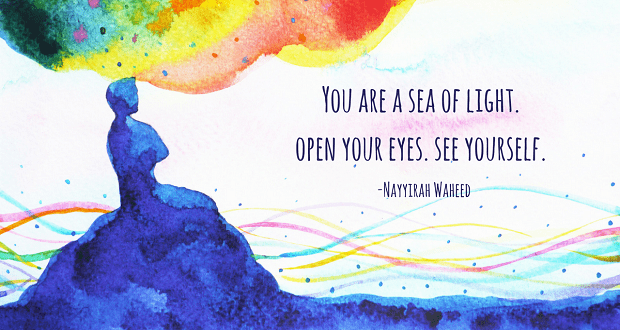
I have a confession. I recently went to the Forum on Workplace Inclusion and I am in danger of binging. In this career, there are always new ideas, new approaches, and new voices to pay attention to. This work is fluid, so there are always new trends (like the current trend around unconscious bias training) to counter the standard and predictive compliance practices, and there is a healthy balance where both traditional measurements and practices and new trends are considered in doing the work.
I like to think about this dynamic between the new practices and the traditional processes in terms of a healthy diet. Do you know someone who has tried different fad diets, schemes, programs, and classes to lose weight? This same phenomenon also happens within our community of diversity professionals. Think about the following Diversity, Equity, and Inclusion (DEI) diets and evaluate whether you or other diversity professionals around you have experimented with these tactics – and how a new 100 Day DEI Diet could help you achieve your goals.
The Cleanse: This particular diet sounds just like what it is. Whether a doctor-directed procedure or a self-inflicted practice, the cleanse is supposed to be about resetting your body in order to get healthy again by removing harmful toxins. But does it work? Is it a healthy option for a DEI Diet in your organization? What does it look like in this context?
Do you know someone that has come into a new role and spends their first 100 days immediately throwing out and downplaying all the diversity work the previous incumbent did? Sometimes when people take this approach without taking the time to sit back, observe and learn about the organization and their role. We also see DEI “cleanses” at the point of a moral crisis like the #MeToo movement. The cleanse mentality comes from a place of fear and perhaps a lack of confidence and immaturity.
It is an important point to go back and review past practices, but it is not wise to throw out everything and start new unless it’s necessary. You are potentially throwing out good practices with the bad ones. This approach may also alienate some allies that were in support of good diversity work. If the only strategy you know how to employ after a crisis is to toss out all old practices and bring in brand new ideas, you can fatigue your employees. To them it will feel like “another flavor of the month” or “another fad diet”.
The Hardcore, Short-lived Workout: Some of the latest trends are around fast, hardcore workout routines. Whether it involves kettle bells or yoga mats, it starts out exciting, but it doesn’t last long. In the workplace, we sometimes emulate this type of workout by introducing a complex new process or initiative that involves a significant amount of resources, but little planning has gone into the execution or timeline. These “organization changing project” often involve multiple tiers of training, personal reflection, and homework all tied into one.
However, if you do too much too fast, with too many moving pieces you will hit some serious pain points in your organization. The pain point might be the budget. The pain point might be that some employees are not able to participate because they come from a smaller unit with a smaller budget. It also could just be too complicated to handle with employee daily work.
Hardcore Workouts are exciting at first, but you will quickly develop sore muscles (a sore reminder that you are not as ready for the project as you thought you might be), a blown out budget from being coerced into signing up for a yearlong commitment, or alienation from those that you had as allies but who cannot participate for various reasons.
Calorie Monitoring: Some people are very structured and appreciate a prescriptive measure. These can keep you focused at first, but after you learn the method it can get easier to break away from the routine. I think about this with calorie monitoring or points programs. I always joked that the first time I joined one of these programs I lost a lot of weight, but the last 10 times l lost nothing. I felt like I outsmarted the program.
In the DEI space, the equivalent to these prescriptive programs could be compliance measures, hiring processes, and recruitment strategies. Initially, it may seem well organized. Everyone is on the same page, but once other elements are added, the strategy slowly slips away. People get too comfortable with the program, so they make minor personal adjustments to their work. When those adjustments are added together it changes the prescriptive measures that were put together in the first place.
Binging: Whenever I go to a conference or new training I feel invigorated and excited about all the possibilities to try at my organization. I spent the day at the Forum on Workplace Inclusion hearing all the success stories from other organizations that focus on why that new diversity program or diversity idea has worked for them. It seems like a good idea to go ‘all in’ once you get back to work, but remember you only heard the positives about the strategy and not all the struggles and time the organization had to put in to support that new initiative.
It’s like over the holidays when there is a lot of great food and treats and you can be tempted to try them all. Soon, you will find yourself stuffed and full of regret. Taking time to think through all the information, assess your organization, and put in small incremental changes is the key to success in most organizations.
The Fad Diet: Do you know someone that swears by one diet one month and then a different diet the next? They move from one celebrity or Instagram model-sponsored diet to another. At the time, much like the hardcore workout, it can seem exciting. In the DEI world there might be a lot of interesting and exciting programs and trainings that you want to try, but they might not fit within your organization or into a long-term, well-thought out developmental program.
If you continually try to initiate a new idea without thinking it through, it can lead to exhaustion amongst your organization. Most organizations want to see results, much in the way that a person who does one fad diet after another expects to see a miraculous body change. This type of approach can quickly lead you out the door, with a shrinking budget, or with low retention amongst your staff.
So, what is the happy medium? Just like in the health and wellness world, a balanced diet is the best approach to a successful DEI office. If you are new to an organization, take some time to get to know the new workspace. Test out ideas slowly with trusted coworkers before making a large change. Try not to do too much at once. Spend your first 100 days learning, adjusting your style, and taking on small challenges to ensure that you will have a healthy DEI office.


















